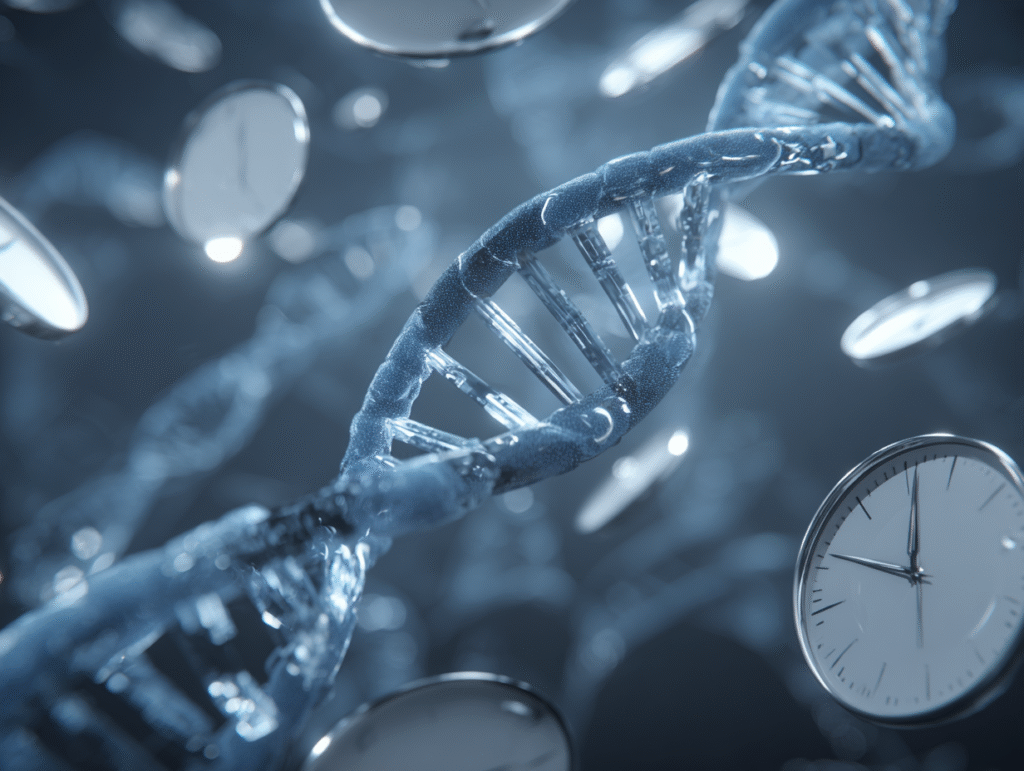Most of us consider the quality of diet, exercise or medical care when it comes to healthy aging. A not to be disregarded aspect, however, can prove to be important: at what point of the day do we eat. A revolutionary study published in the journal of Communications Medicine in 2025 has shed new perspectives on how timings of meals change in old age and the impact it will potentially have on morbidity, genetic profiles, and even survival.
This study trailed almost 3,000 older adults who lived in communities in the UK over a period of over 30 years. The researchers found that delayed meal times, genetic data and mortality rates indicated that delayed breakfast times and changed meal times can be minor indicators of deteriorating health and a higher risk of death.
What the Study Found
Changes in Age Regarding Meal Timing.
The researchers at Harvard Medical School and the University of Manchester followed up the self reported breakfast, lunch, and dinner hours among participants over the period of 1983-2017.
Key findings included:
With age, breakfast and dinner times were later.
The midpoint of eating (the midtime between the first and the last meal) also shifted later.
The eating window was reduced in terms of time, that is, older adults had a limited time to eat.
It is interesting to note that lunch times were quite steady, which is probably due to the tendency of lunch schedules to be socially organized.

Health and Timing of Meal.
The correlation between the later the breakfast time, and physical and psychological illnesses was among the most vivid also:
Late breakfasts were related to fatigue and oral issues.
The delay of meal timing and short eating windows was associated with depression and anxiety.
Multimorbidity (similar conditions of health) further advanced meal schedules to later.
These findings indicate that the delayed eating habits can be an indication of a health plight and not necessarily a health choice.
The Genetic Dimension
The researchers also looked at genetic profiles of chronotype (to be a morning or a night lark) and obesity.
Eveningness genetically predisposed individuals were more likely to have a later meal in the day.
The genetic markers associated with obesity were found to be related to a shortening of the eating windows which may have been as a result of snacking habit.
Genes influencing obesity however did not significantly alter main meal times.
This leads to a critical conclusion which is that our internal clocks, to some extent, have been affected by genetics, and when we eat, it is late into older adulthood.
Meal Timing and Mortality
The most revelation finding was probably the relationship between late breakfast time and the risk of mortality.
Taking one more hour of the late breakfast was associated with an increased risk of death by 8-11 percent.
In a period of 10 years, late eaters had a survival rate of 86.7% as compared to early eaters who had a survival rate of 89.5%.
Although small, these findings imply that the time of the meal might be a non-invasive but simple predictor of the general well-being and life expectancy.
Why Does Meal Timing Matter?
Meal timetables have the potential of influencing health, and the reason is the field of chrononutrition, or the study of how eating times coincide with our circadian rhythms.
Late night meals interfere with glucose metabolism, increasing the probability of obesity and type 2 diabetes.
Regular early breakfast can aid in circadian alignment keeping metabolism on schedule.
Newer changes in sleep, oral health and chronic diseases may disrupt meal timing, which may aggravate the results in older adults.
In other words, eating influences the way our bodies process nutrients and stay in balance.
Healthy Aging Implications.
This paper highlights the need to focus on when food is consumed and not just what is on the plate. Among older adults and caregivers, there are several lessons to be learnt:
Promote earlier breakfast. Having a morning meal schedule would potentially contribute to improved circadian regulation and lower the risk of health.
Monitor a change in eating patterns. The abrupt change to later meals can imply some health issues.
Encourage regular meal timetables. Even small consistency in timing can assist in stabilizing sleep, metabolism, and health.
Take into consideration social and environmental aspects. Meal patterns can be disrupted by retirement, assisted living or a lack of appetite (so called anorexia of aging).
Limitations and Future Research.
The elderly and those of European descent were mostly used in this study limiting its generalizability. It also failed to monitor snacking habits, timing of nutrients and amount of physical exercise. Nevertheless, the limitations do not affect the fact that it remains one of the most thorough studies concerning meal timing and aging to date due to its longitudinal design, which continued over a period of over 30 years.
Future studies will require investigating the ability of interventions e.g. time-limited intake or bringing lunch ahead of time to positively affect the health results and lifespan in aging individuals.
Conclusion
The timing of meals might also be minor, yet this historic study demonstrates that it might be crucial to healthy aging. Subsequent breakfasts, especially later ones, were connected with increased risk of illness and death and indicate that the timing of breakfast consumption is similarly important as its contents.
As scientists keep on experimenting on the chrononutrition field, one thing stands out; it may be necessary to pay attention to the clock rather than the calories that may be necessary to live longer and healthier.
References & Resources
Dashti, H. S., Liu, C., Deng, H., Sharma, A., Payton, A., Maharani, A., & Didikoglu, A. (2025). Meal timing trajectories in older adults and their associations with morbidity, genetic profiles, and mortality. Communications Medicine, 5:385. https://doi.org/10.1038/s43856-025-01035-x
National Heart, Lung, and Blood Institute. (2023). Advancing chrononutrition for cardiometabolic health.
American Heart Association. (2017). Meal timing and frequency: Implications for cardiovascular disease prevention.

